Refinishing a Legend: Dad’s 1930s Browning Superposed 12 Gauge Over/Under Shotgun Stock Refinish
Russ Chastain 04.17.20
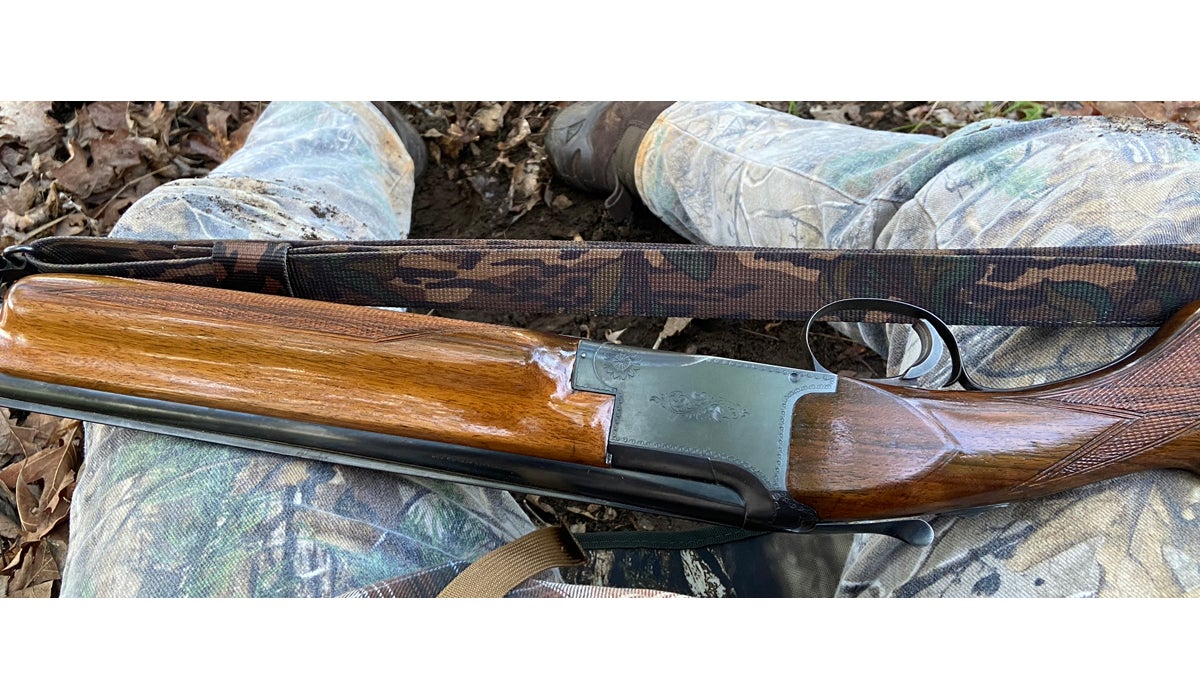
When my father passed away more than a dozen years ago, I inherited some of his most-loved firearms. Perhaps the one he cherished most was his old 1930s Browning Superposed 12 gauge over/under shotgun, which he lovingly dubbed “Sweet Thing.” Like father, like son. That is the one I love the most and have carried and used the most. You’d think that no other shotgun exists, as I use it for everything from skeet to doves to turkey hunting. We’ve both used it so much that by this time last year, most of the checkering has been worn off of the walnut butt stock and forearm.
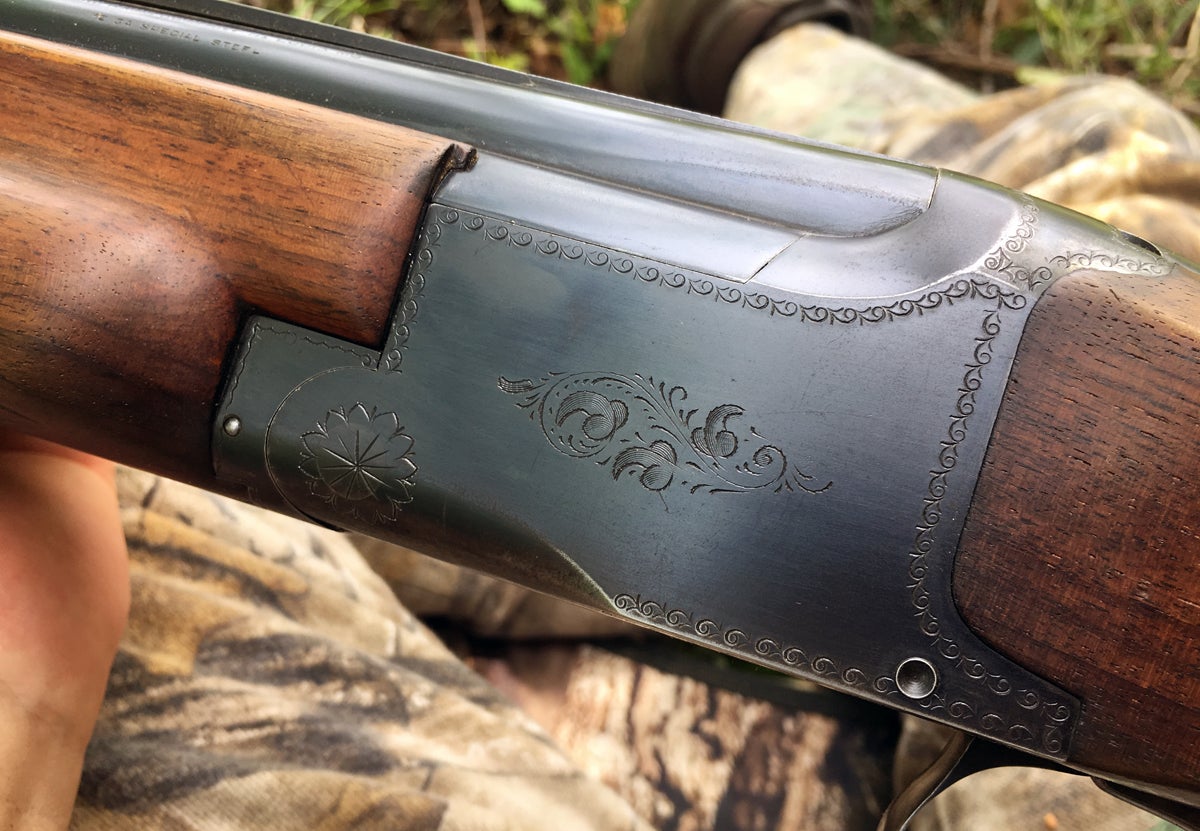
(Photo © Russ Chastain)
Someone probably refinished the stock at some point, but not within my memory — and my first gun-cleaning lessons were with this shotgun when I was 11 years old. The gun being about 45 years old then, I’d imagine the wood had received some sort of attention during those preceding years. One thing was definite: after four more decades of use, it was time to give the old gal some love. After all, she’d been good to us, giving Dad the biggest buck of his life and allowing me to slay every wild turkey I’ve ever harvested.
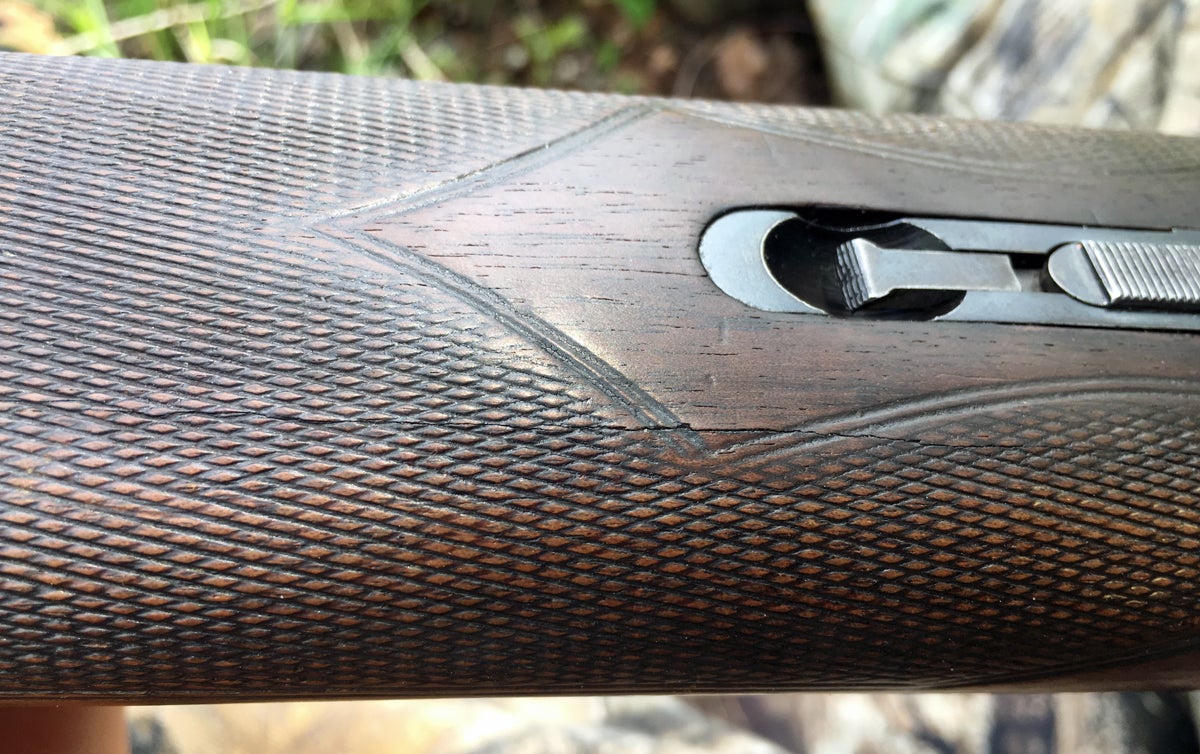
(Photo © Russ Chastain)
A crack had developed in the shotgun’s forend, and every time I got caught in the rain the wood would swell and contract, leaving the crack a little more evident.
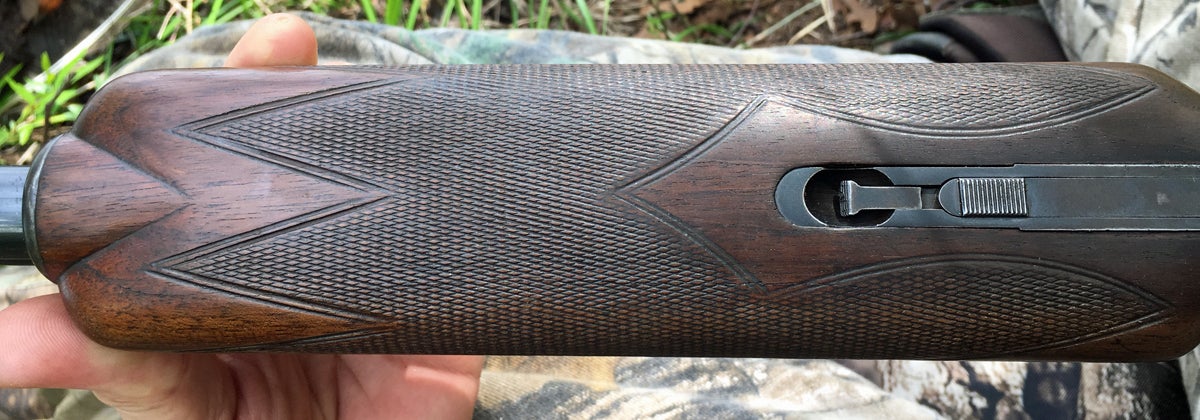
(Photo © Russ Chastain)
In some ways, I hated to lose the dark tone of the aged walnut stock… but much of that darkness is actually gun oil (and natural oils from hands) that has soaked into the wood, and that is not good for wood. So after stripping the old finish using chemical stripper, a stripping pad, and a stiff brush (for removing finish from checkering and other low points), I will wash the stock with Dawn dish soap & water to de-grease it.
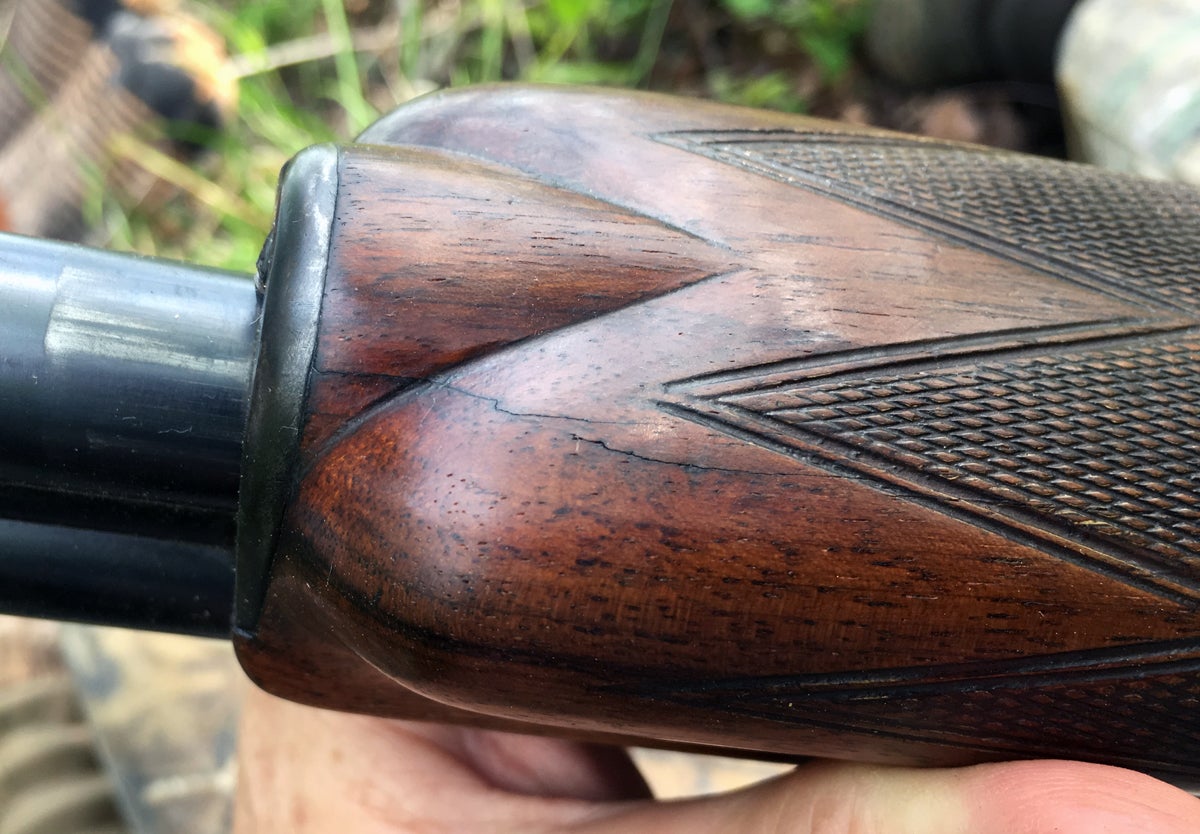
(Photo © Russ Chastain)
I have no idea what caused the crack; it became evident gradually. It’s probably been there for decades.
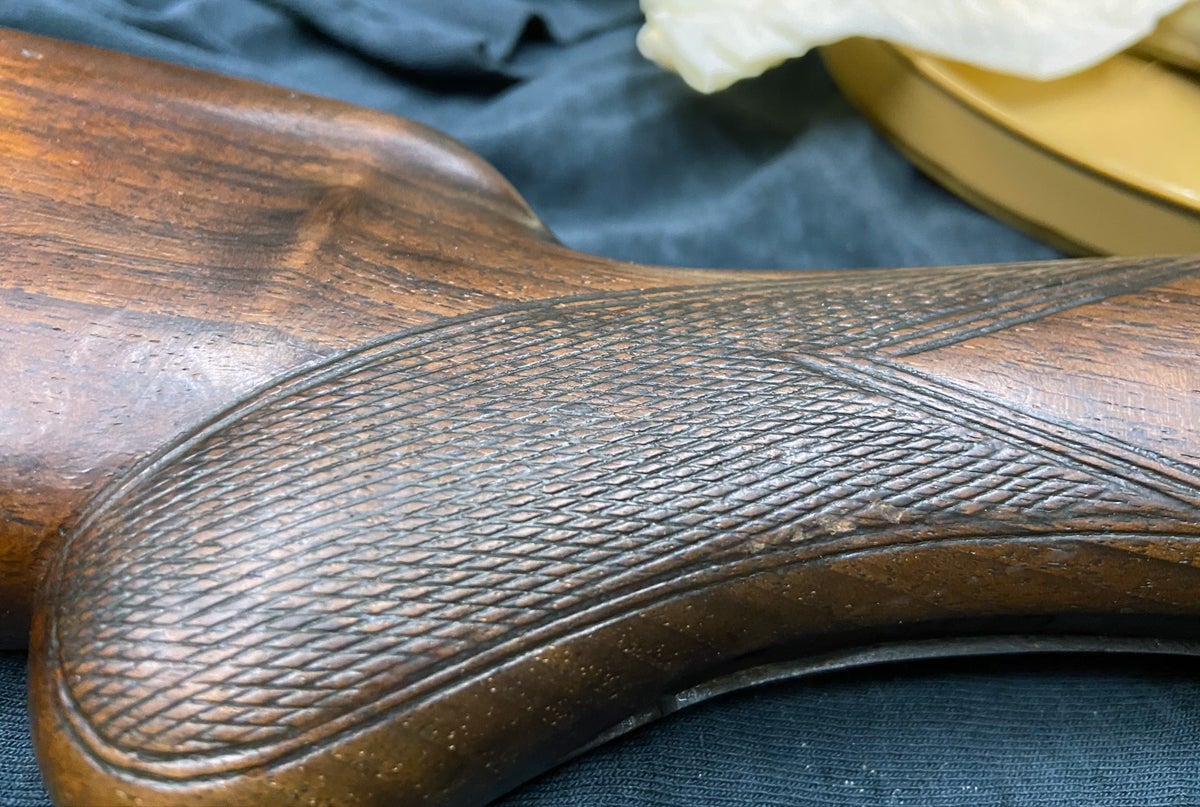
(Photo © Russ Chastain)
The points of the checkering were worn off long ago, and oddly enough you can see that the lines were cut deeper in one direction in some areas. That made it difficult for me to recut the pattern, especially because this was my first time using checkering tools.
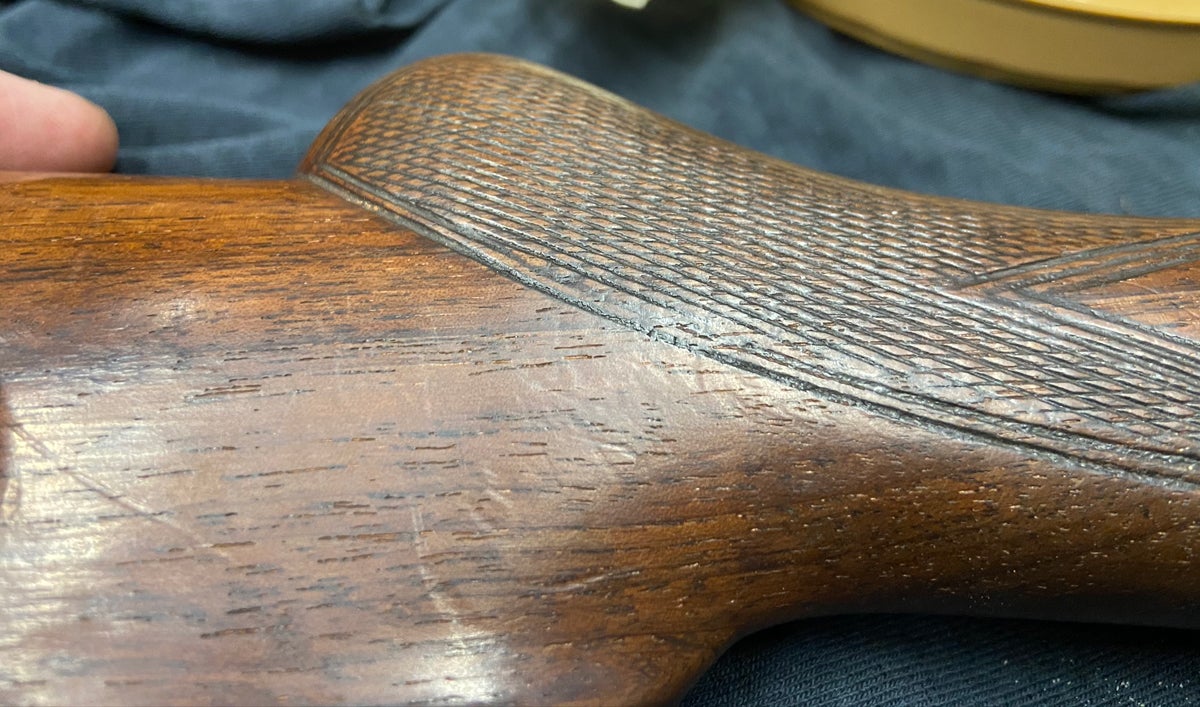
(Photo © Russ Chastain)
Here, you can really see how flat the checkering is, and that the lines are much deeper in one direction.
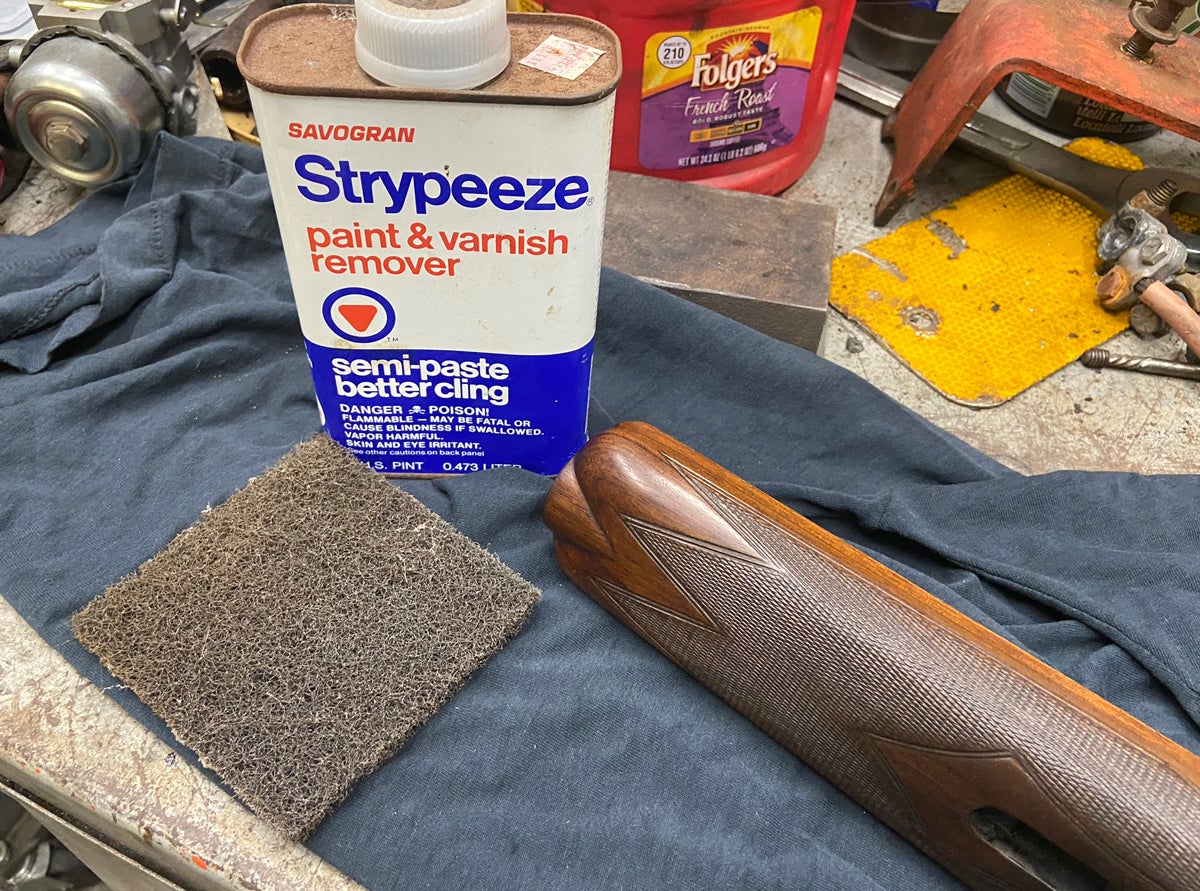
(Photo © Russ Chastain)
I learned long ago to use a chemical stripper to remove the old finish, rather than sanding it away. This leaves you with plenty of wood to work with, and it prevents you from ruining checkering by sanding off the points. It also helps prevent rounding of edges where the wood meets metal. The less sanding you can do in those areas, the better.
Use a stiff toothbrush or something similar to remove the softened finish from checkering after allowing the stripper to work. Again, DO NOT sand checkering.
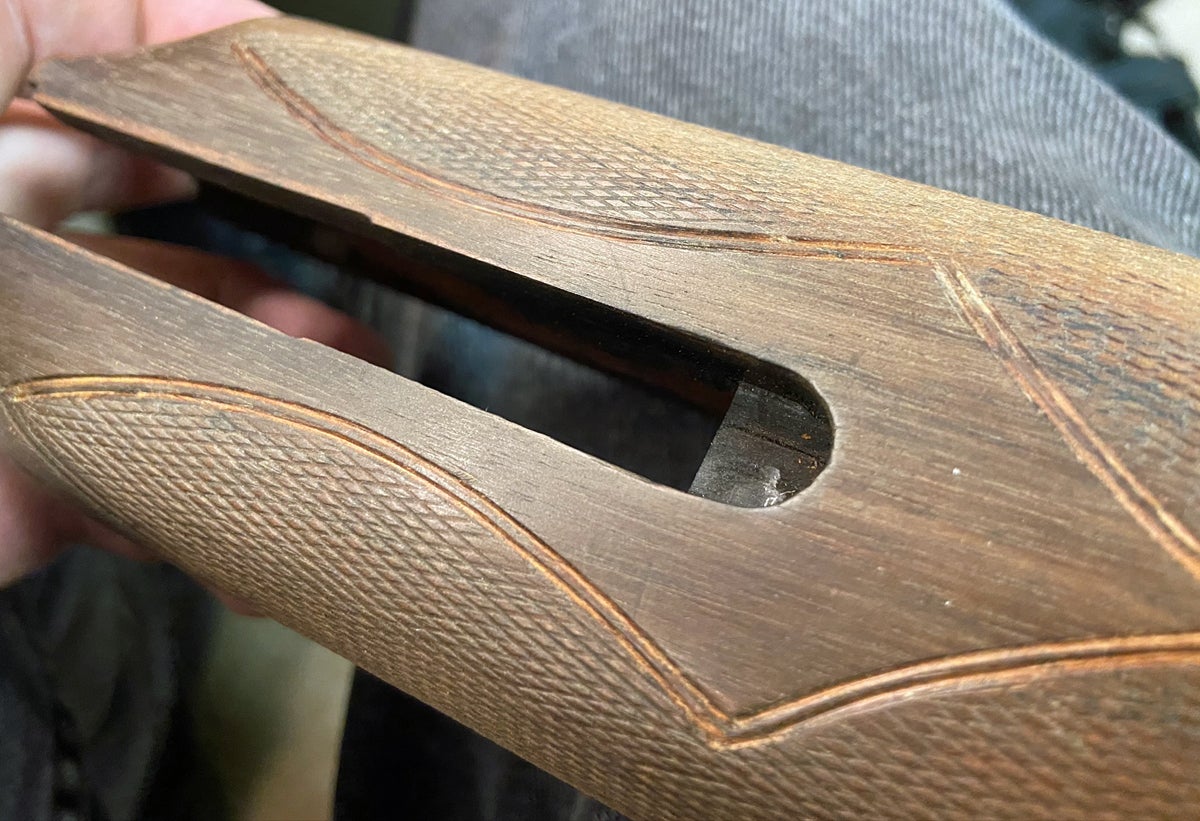
(Photo © Russ Chastain)
I had some old tools from a late friend who did some gunsmithing, and I began by freshening up the border on the old forend.
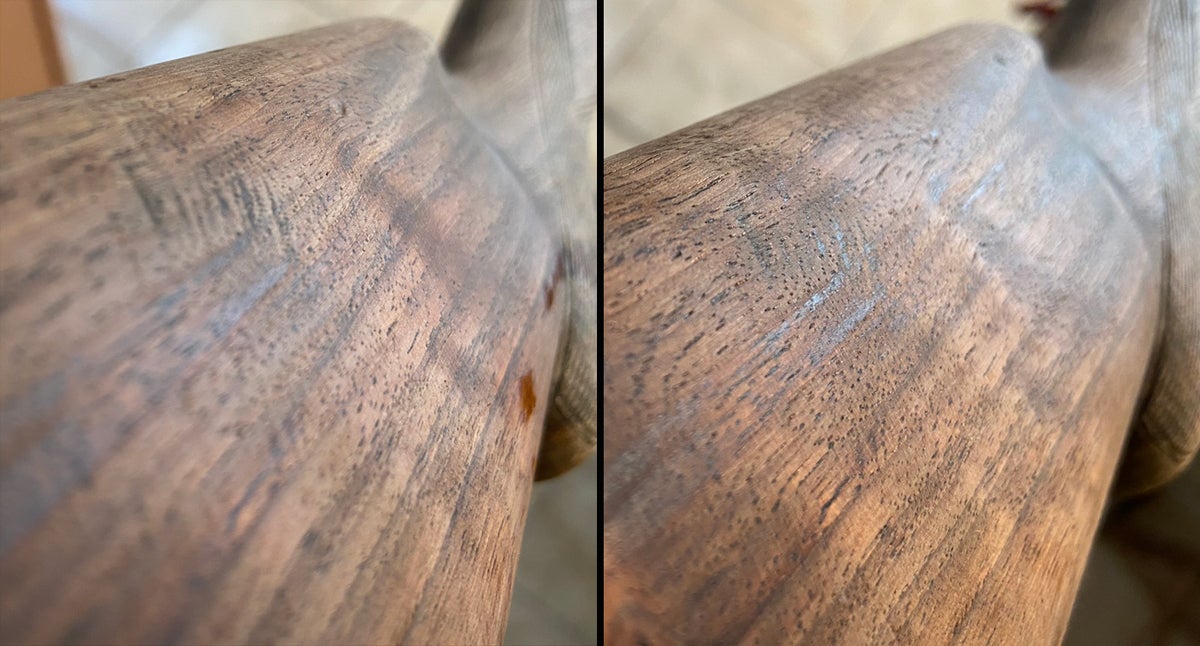
(Photo © Russ Chastain)
Most stocks you refinish will have dents in them. Instead of sanding away all the wood around a dent to get rid of it, first iron the wood with a clothes iron. Place a damp cloth (an old towel works well) on the wood, then run the iron over the towel. The steam action will help raise the collapsed wood in the dents, and will “raise the grain” on the entire surface of the stock, completely eliminating most small dents and dings..
Take care not to damage the wood with the iron’s sharp point or edges.
If you wish to make old marks disappear (I didn’t; I preferred to leave them as ‘character marks’), you can then sand the area using a sanding block to prevent low spots in the wood.
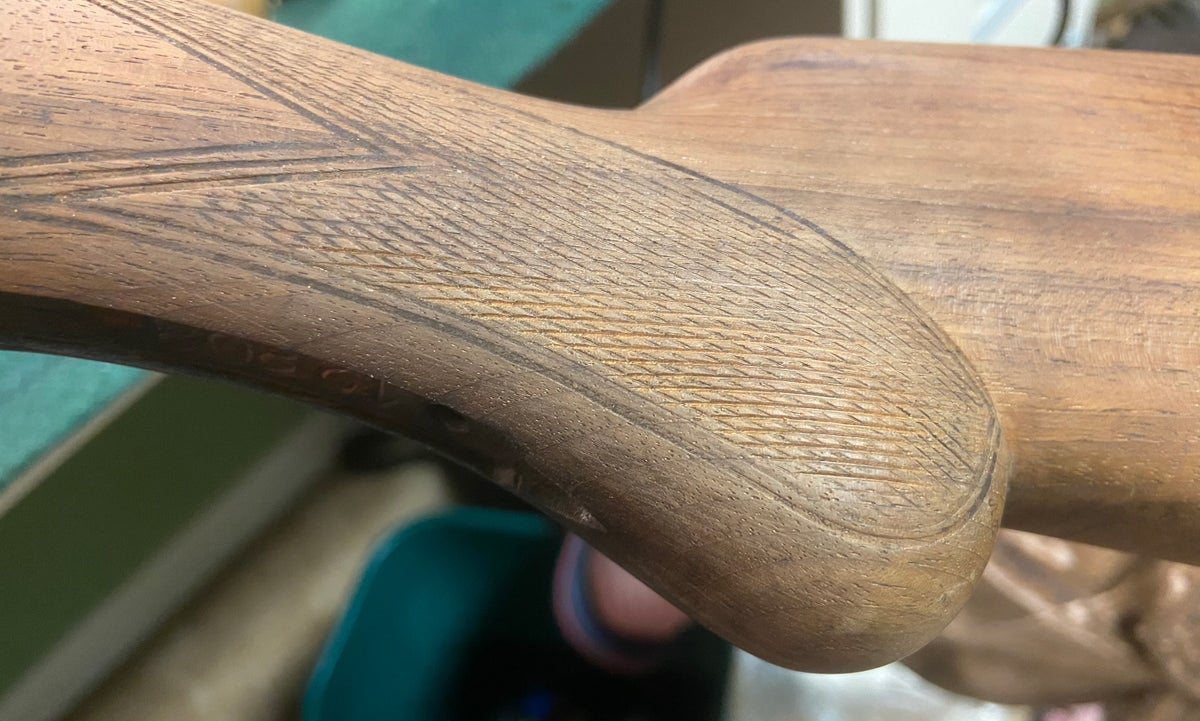
(Photo © Russ Chastain)
In everything you do, you learn as you go along. It took many hours to re-cut the checkering, and by the end I was okay at it, but I still ran astray at times. And once you cut wood off, you can’t cut it back on. It’s important to go slowly and take your time.
The actual method of cutting checkering is interesting, but that’s for another time.
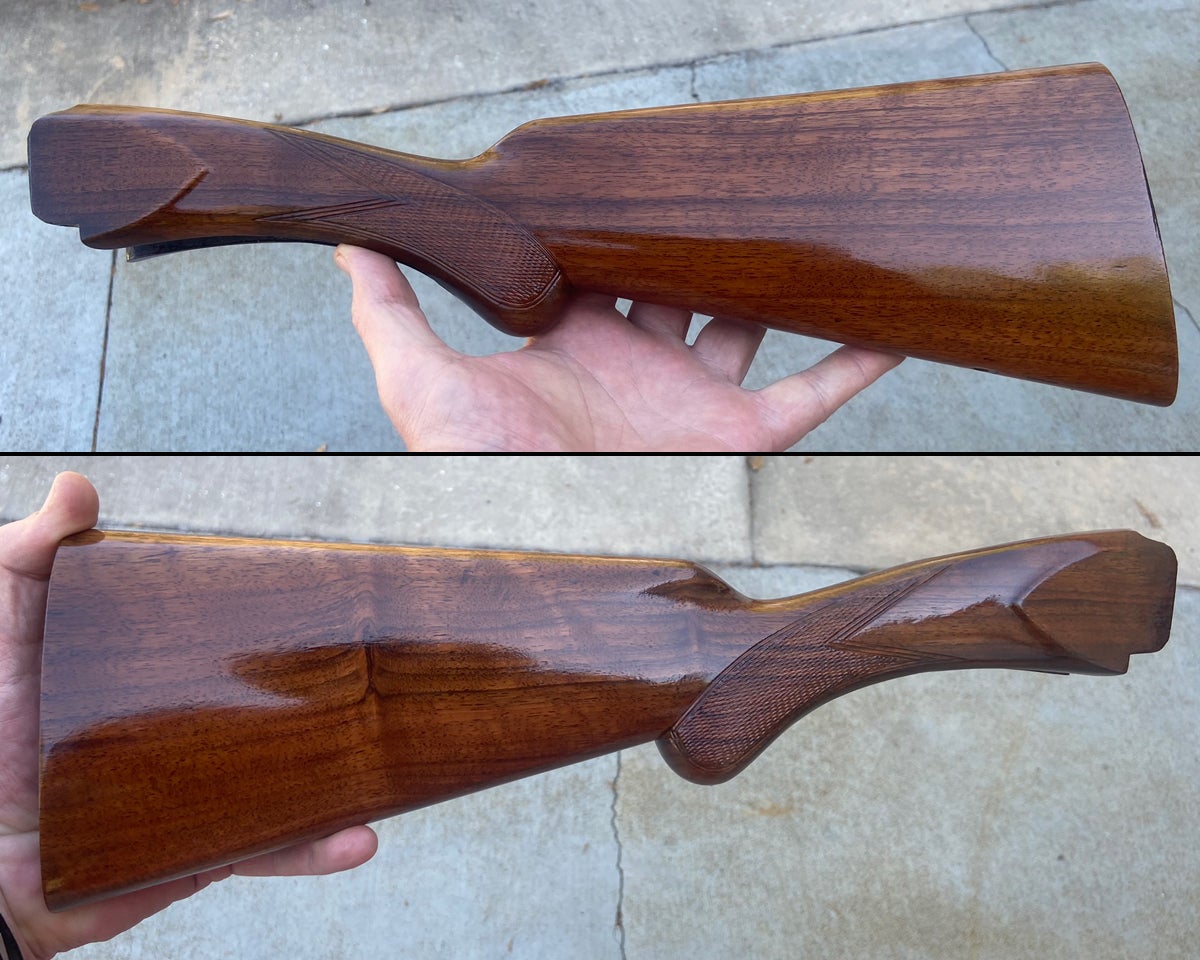
(Photo © Russ Chastain)
Once I finally had the wood ready, turkey season was almost upon me, so I didn’t take as many photos as I should have. I applied a half-dozen or so coats of Birchwood Casey Tru-Oil gun stock finish, scuffing the non-checkered areas with steel wool between coats to allow good adhesion with the previous coat, and to remove runs and high spots.
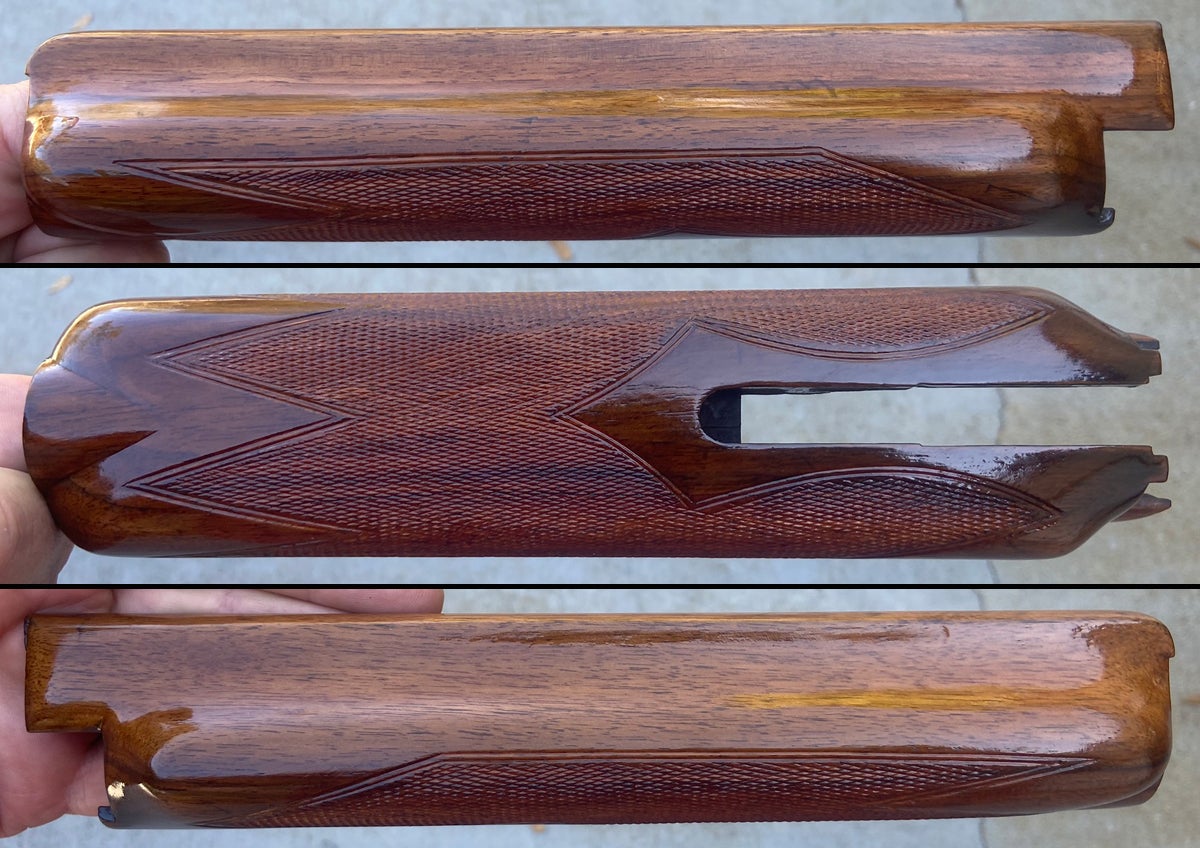
(Photo © Russ Chastain)
You want to continue applying coats of finish until the grain is filled; then continue if you wish to attain a truly smooth finish. I stopped once the grain was sealed thoroughly and filled, but I may go back again to add a few more coats. Tru-Oil makes that easy.
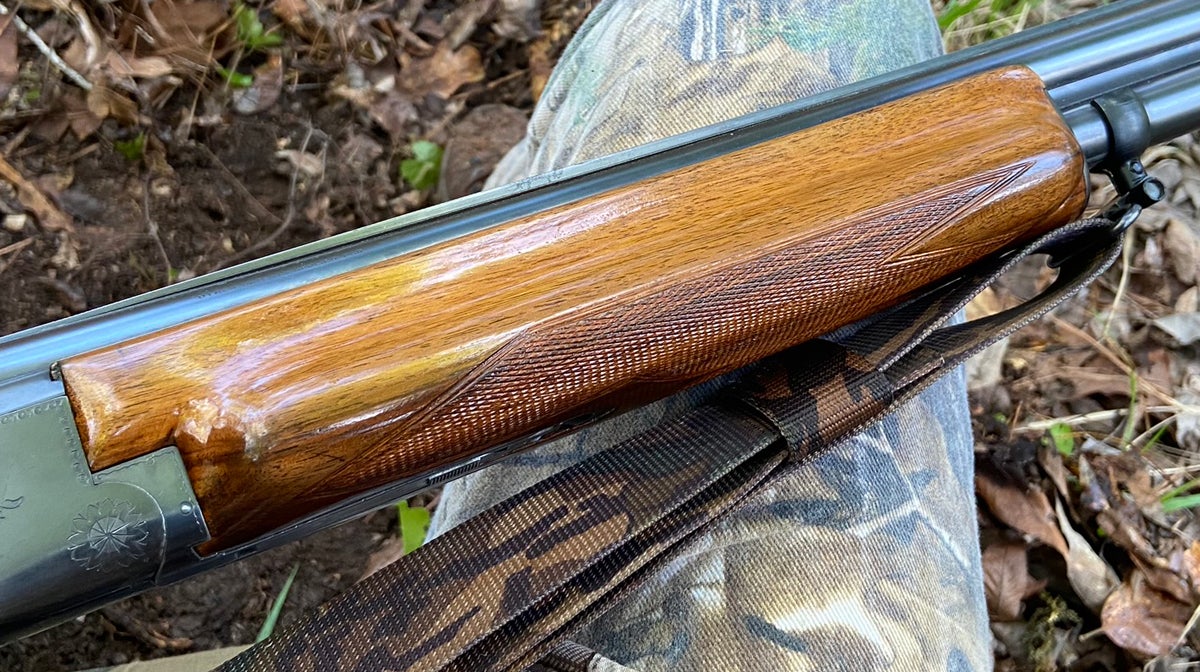
(Photo © Russ Chastain)
I apply the finish by hand, rubbing it onto the wood with my fingertips to create a thin, even coat. In checkering, apply some liquid finish in there and then spread it evenly in the checkering using a toothbrush, brushing in both directions with the lines of the checkering. If you don’t do that, the finish will fill up the checkering grooves, and that’s un-good.
Between coats, I soaked the toothbrush in mineral spirits to prevent it from hardening, then dried it off before brushing the next coat into the checkering.
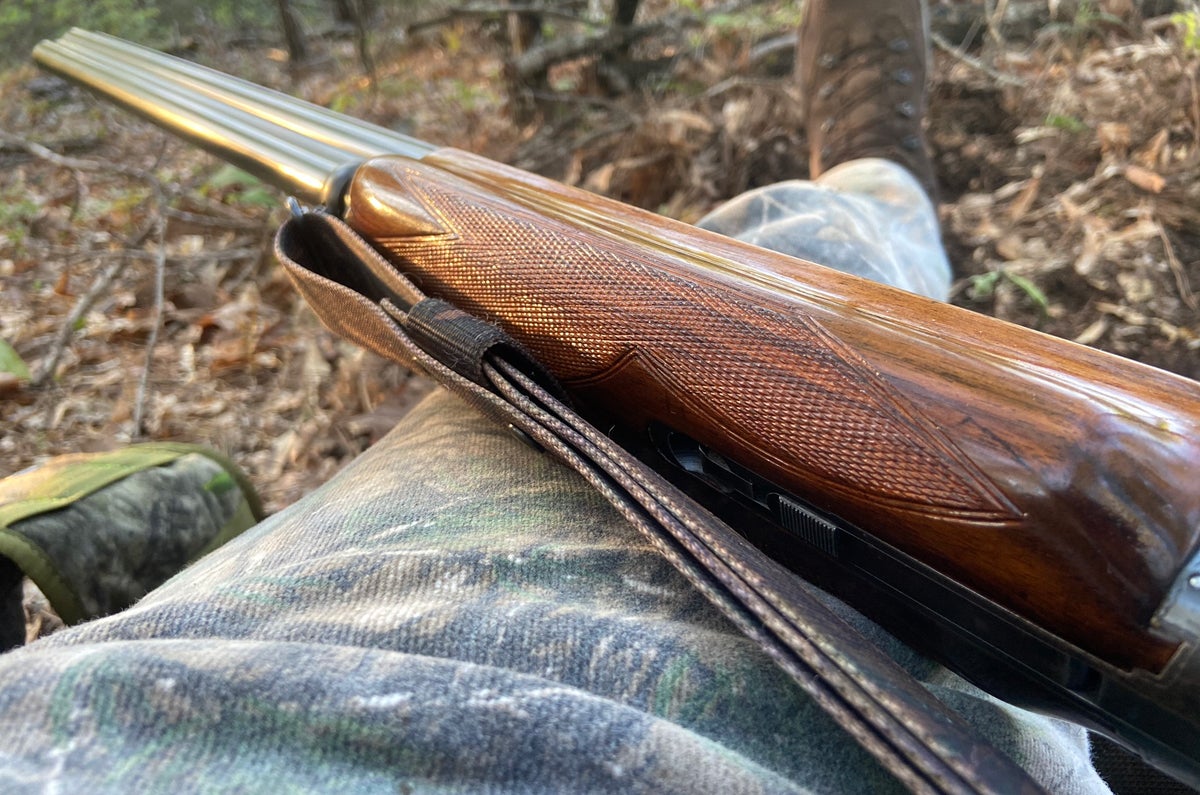
(Photo © Russ Chastain)
By the time the wood was ready for the finish I was pretty disgusted with all of my checkering errors, but the beauty of the oil finish tells me not to fret about it. It’s not difficult to see where I messed up, but the checkering is still functional and it’s not like I’ll ever sell this gun anyhow — therefore I don’t really worry about its possible ‘collector value.’
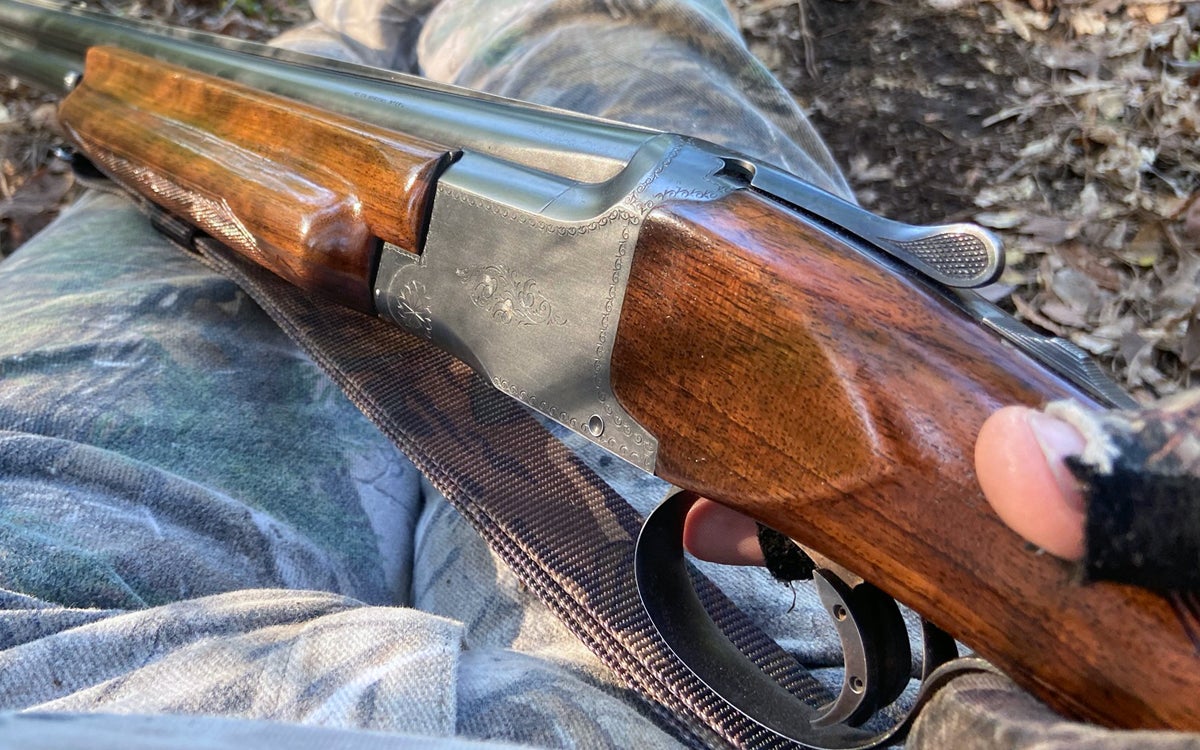
(Photo © Russ Chastain)
This gun is a working hunter’s companion, not a wall-hanger or safe queen. But that doesn’t mean she can’t look good while afield.
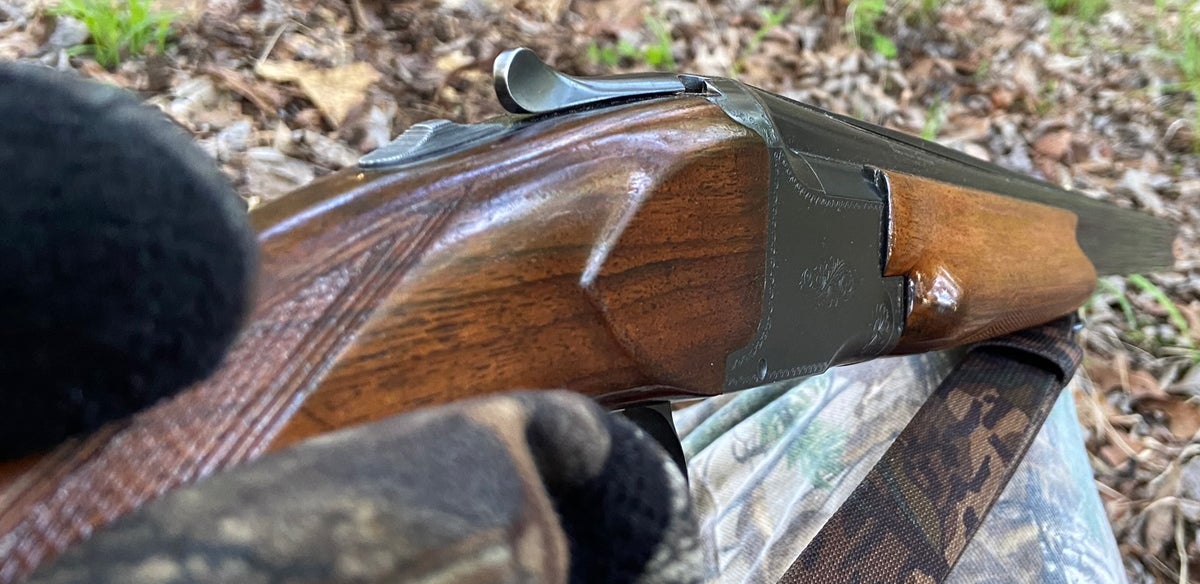
(Photo © Russ Chastain)
No turkeys deigned to cross her path on Sweet Thing’s first hunting trip after her beautification. I’m pretty sure they were scared to.
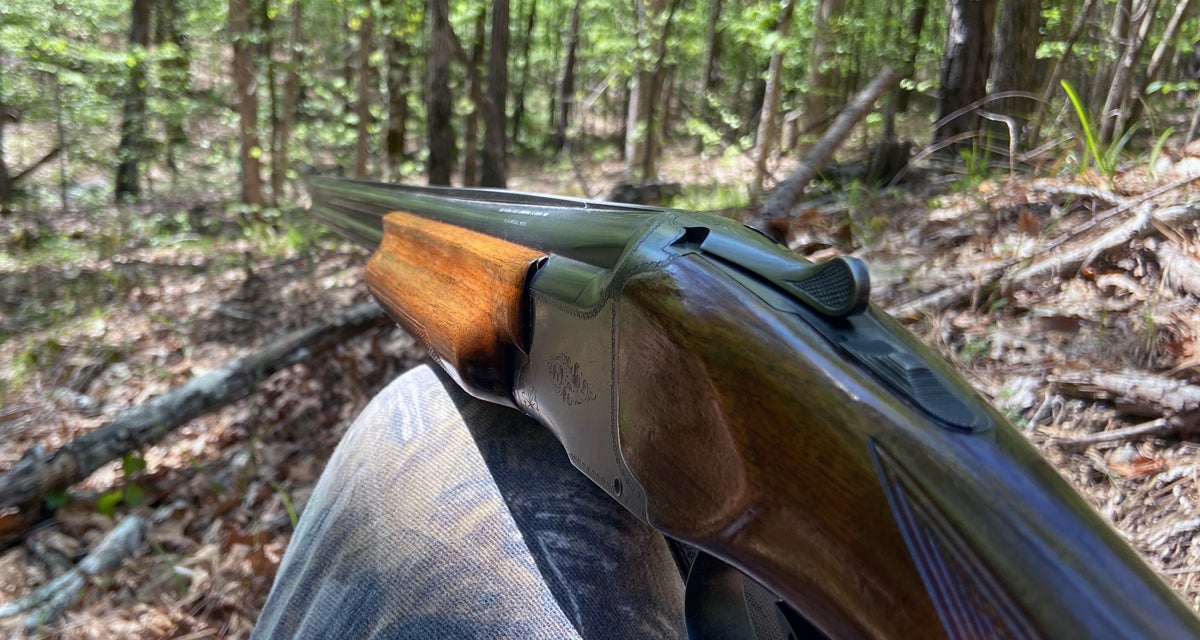
(Photo © Russ Chastain)
Turkey or not, it gives this hunter joy to behold the beauty of this old twin-stacker, while knowing I’ve also sealed the wood to keep out moisture and damaging oils.
Hmmm… I’d just about given up on getting a turkey this year, but writing this article has refreshed the itch. Maybe I’ll hit a WMA for turkeys, which is something I haven’t done in years. I mean, it seems a shame to just prop the old girl in the safe until dove season…
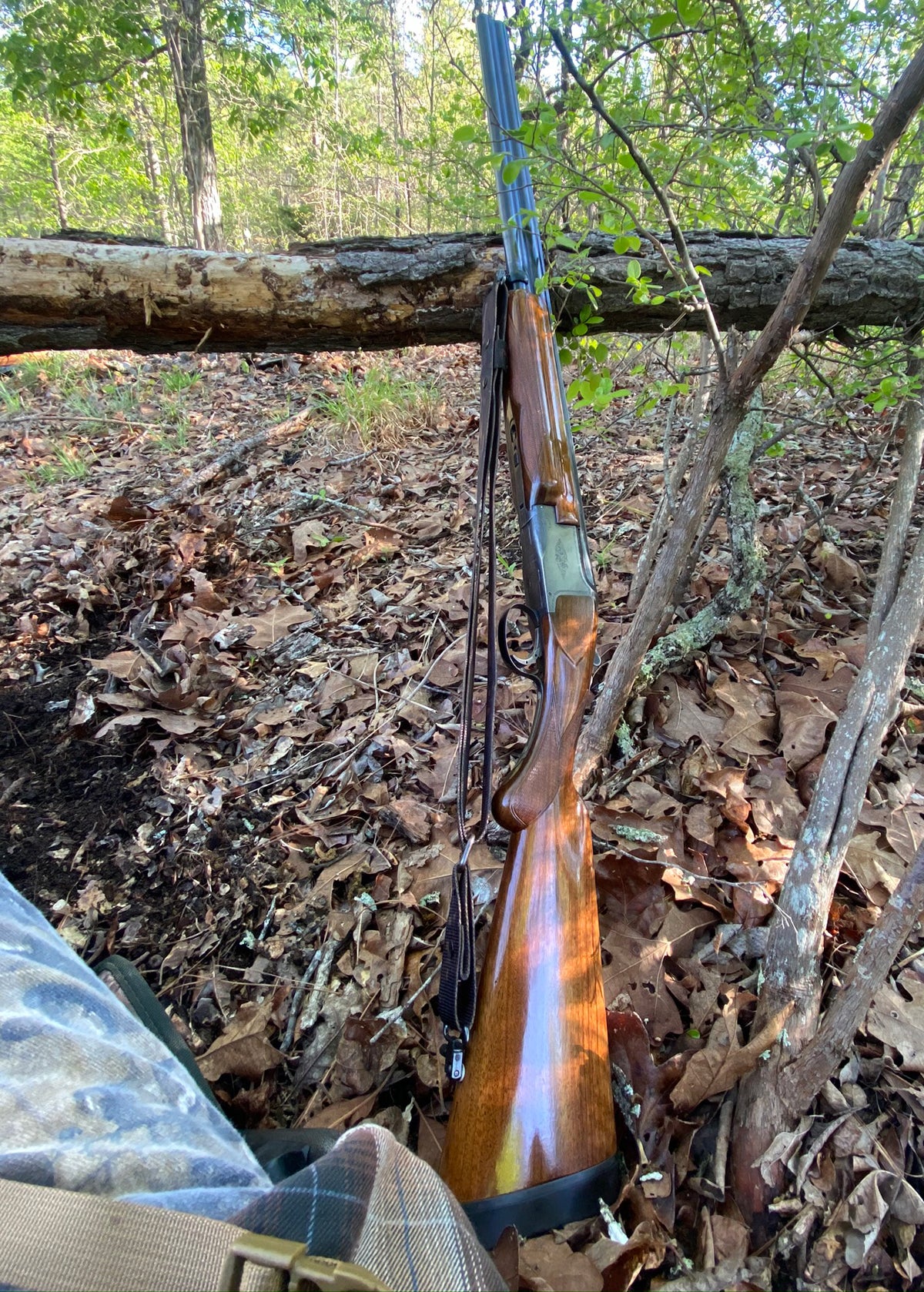
(Photo © Russ Chastain)
Do you have an old wood stock that needs a refinish? This might be the time to do so… although with any luck the world will be opening back up again before long.
Happy hunting.